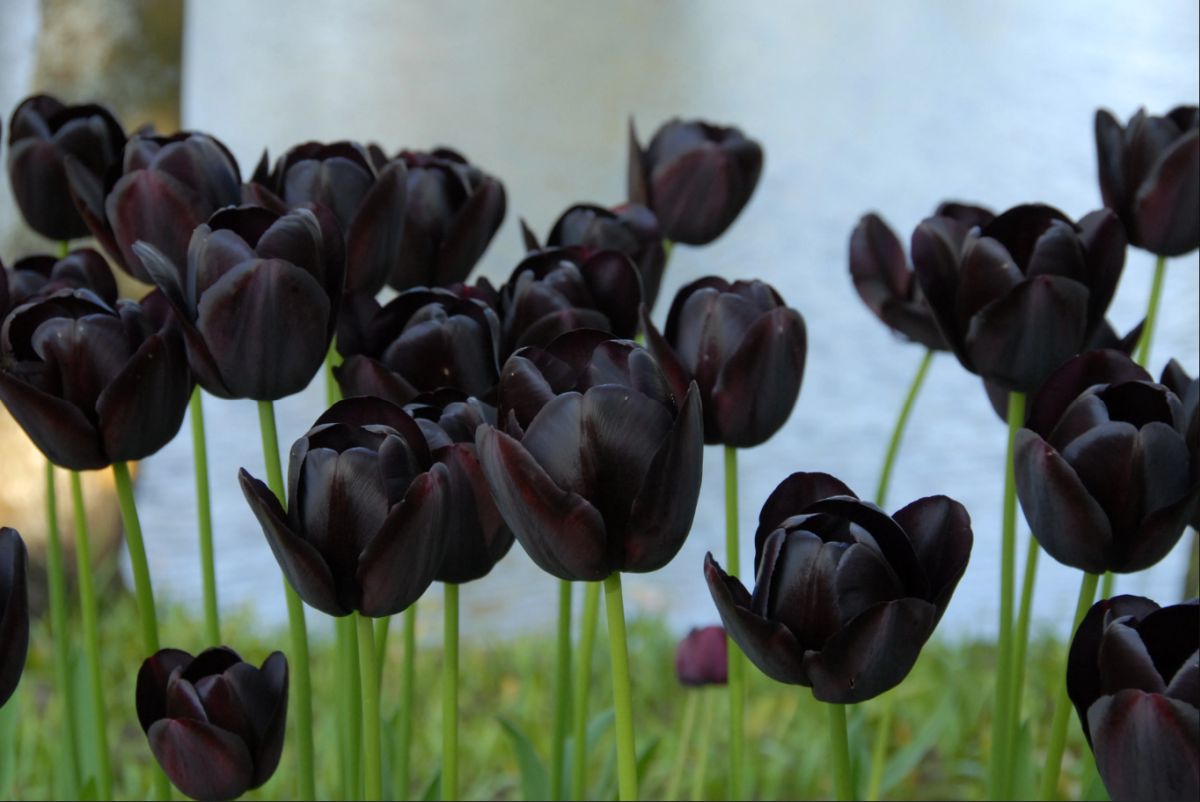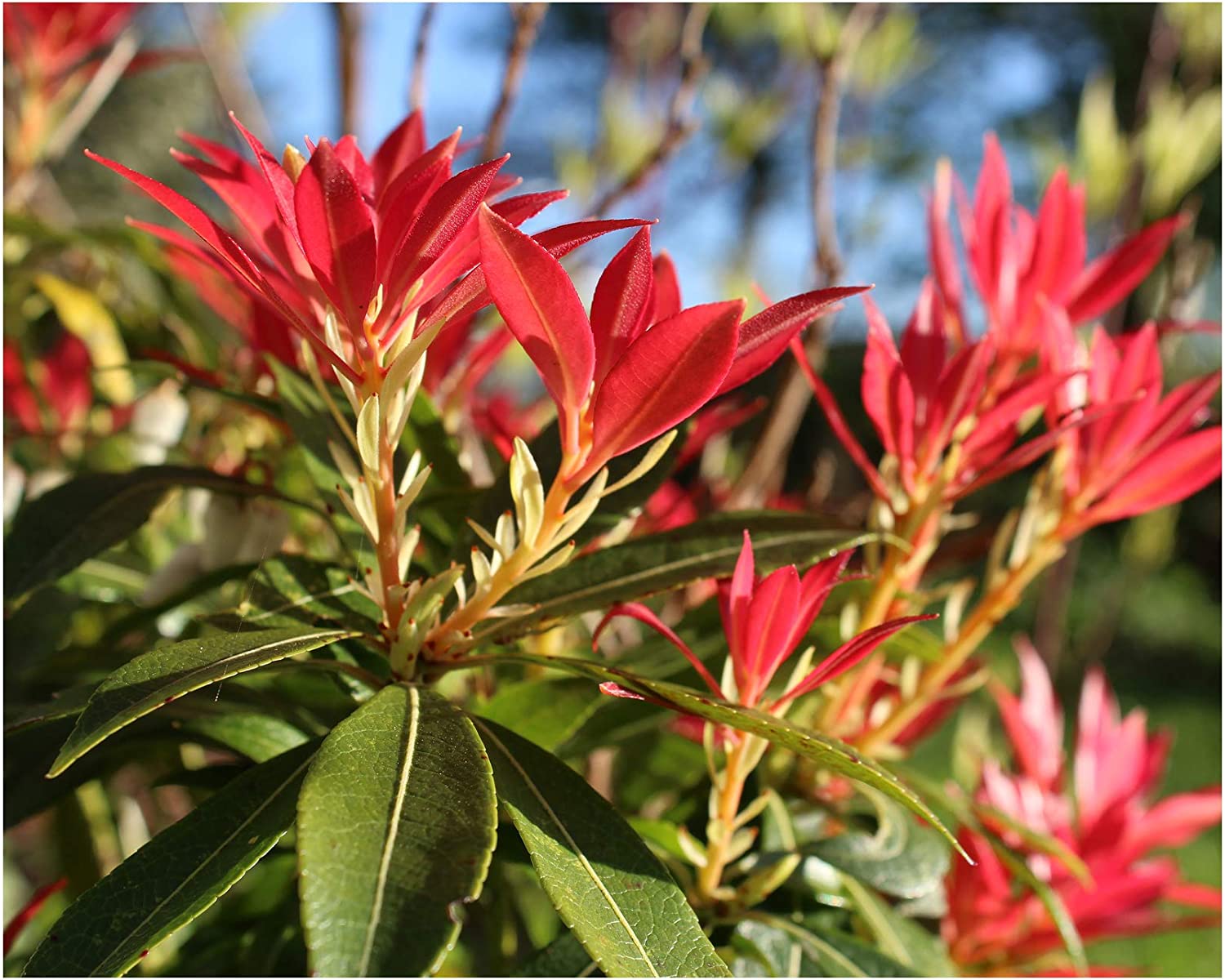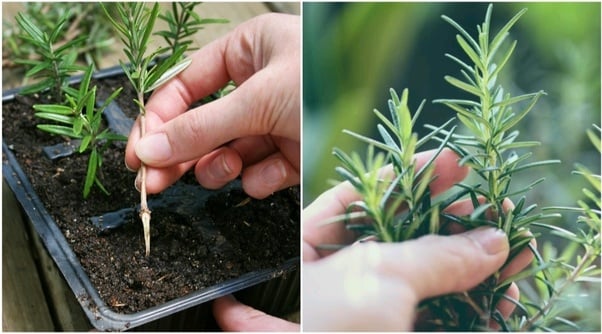The Ultimate Growing and Care Guide for Nepeta ‘Catmint’ Plants

Table of Contents
Cat mint is scientifically known as Nepeta Cataria. This is a flowering plant that is attractive to look at and grows with a minimal level of maintenance. In other words, the cat mint is an easy-to-grow perennial plant. There is a unique feature attributed to cat mint. It gives out aromatic foliage that attracts cats. That is why the flowering plant is commonly known as cat mint. The leaves of cat mint are either green or grey-green. The stems are covered from summer to autumn in mauve and blue flowers.
Again, why is this flowering herb particularly called a cat mint? Well, it is because cats nibble on the stems, leaves and flowers of this plant. Many stuffed cat dolls consist of dried cat mint leaves. If you have cats as pet animals, then they love to roll on and sleep on these plants. The Nepeta Cataria or commonly known as Cat Mint, originated from countries belonging to the Northern Hemisphere.
Let us discover cat mint as companion plants and learn tips on how to grow and maintain them!
A Complete Guide On Growing Catmint
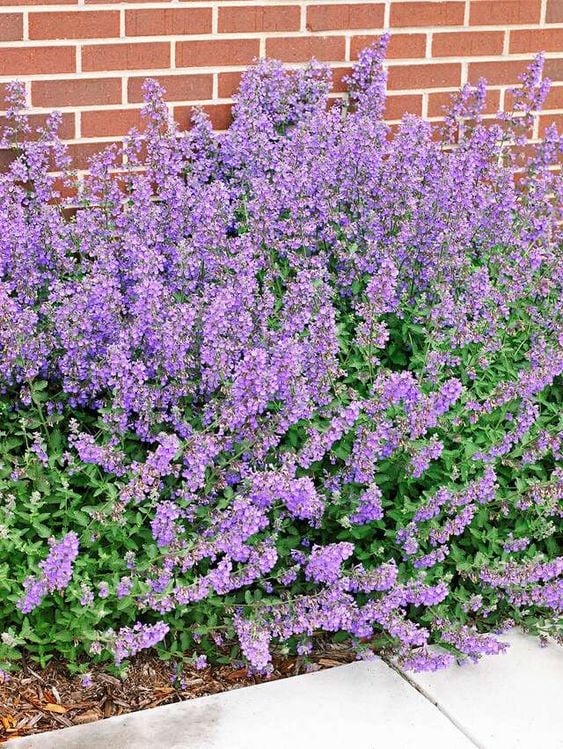
Cat mint plants are quite easy to grow and maintain. You can grow these flowering beds across areas where there is plenty of sun rays. You also require rich beds with fresh and nutrient-rich soil for these plant perennials to grow in. You can use raised beds with free-draining soil, as a matter of fact. These are plant perennials that can grow throughout the year.
You can also place Nepeta Cataria or Cat mint in flower pots in order to beautify your garden spaces. These plants can bloom pretty-looking flowers during the autumn and spring seasons. You may have to trim stems so as to encourage more bloom during the summer season. During the autumn season, its foliage may fall out. In order to protect these plants during the autumn season or winter fall, you can dig into the ground a little deeper just before the onset of the spring season while you aim to plant them.
When these flowering beds are maintained well, your gardens look incredibly beautiful indeed. You can witness grey-green foliage with lavender-blue flowers. The foliage and flowers of the cat mint, its growing conditions, and its bloom time can vary from time to time.
Where Do You Ideally Grow Cat Mint Plant Beds?
Cat mint requires a hot and sunny spot to grow in. You require soil that can take in nutrients freely. In other words, the soil must be drained free. You must therefore avoid a type that is as heavy as clay soil, as you do not want your gardens to get waterlogged. Cat mint plants can sustain drought weather conditions too. This is mainly because their silvery grey leaves can sustain scarce water conditions.
Cat mints are low-growing plants. Therefore, you can use raised beds to grow them. These are planting perennials that grow well near the border areas of your outdoor spaces. You can also grow these plant beds near path-way areas. When you grow them via raised beds, they tend to spill out from the beds, lending a beautiful sight to your spaces. When you plant cat mints through raised beds, you must soften their edges from time to time.
Again, you can try planting these flowering beds underneath your rose plants. This is because their low-spreading growth and softer colours make it ideal for you to have them planted under the rose bushes of your gardens. These plants can look exotic and mind-blowing when you plant them in groups or through long drifts.
Explore Various Options Pertaining to Cat Mint Care
Cat mint is a variety of plant bedding that grows and thrives with almost zero degrees of maintenance from your end. If you look at it, most of the recently introduced varieties of Nepeta are sterile hybrids that produce no seeds into them. Therefore, you do not have the need to weed these plant beds every now and then. The older cat mint plants had self-seeding options, which meant that they would disperse or propagate their seeds here and there. Henceforth, if you want to plant more varieties of cat mint plants, you have to buy them fresh from nurseries.
Let’s take a look at some of the Cat mint care tips:
1. Plant Them Near Sunny Locations
You need sunny locations wherein there is plenty of light and ventilation. These plants require full-sun locations with well-draining soil conditions. Plenty of sunlight and a well-draining or lean soil encourages better growth of cat mint plants on the whole. These cat mint companion plants also grow under partial shade. You may have to avoid adding too many fertilizers to these plants as they end up giving away too much flimsy foliage, as a matter of fact.
2. Choosing the Right Variety of Cat Mint Plants Proves Beneficial
Choosing the right variety of cat mint plants requires a thorough knowledge of how these plants evolve or thrive on the whole. You must learn how well these plants grow. Mature varieties of cat mint plants are 10 X 24 inches tall and 10 X 24 inches wide. These are bushy plants of good quality. Again, you find certain variants of cat mint plants that grow four feet tall and three feet wide. As there are newer varieties of cat mint plants that are introduced in the market every now and then, it is advisable you shop around and read plant tag labels before you zero in on the right type of cat mint plants that will typically suit your gardens or other outdoor spaces of your homes.
3. Perform a Delicate Weeding Process for Your Cat Mint Plants
You can expect your Nepeta to start blooming in early summer. You find repeat blooms throughout the growing season, indeed. Deadheading or trimming the plants is essential to produce a better variety of blooms. You will be able to produce bulkier plants with lush second blooms this way. Cat mint plants are rarely affected by pests or diseases. These are healthy plants that can sustain all types of weather conditions, as a matter of fact.
4. Analyzing the Right Type of Soil that Is Needed for Their Growth
You must provide humus-rich and well-draining soil for the optimal growth of these flowering plants. Although it is a fact that cat mint plants can be cultivated in other soil varieties too. These include dry clayey soil, sandy or even rocky soil. The cat mint plants are not very fussy about the soil’s pH levels indeed. They can adapt to a wide variety of pH ranges (5.0 to 8.0), as a matter of fact.
5. Watering of These Plants
The cat mint plants have to be watered regularly during the initial period of their growth period. During the first month of their existence, you may have to water the plants every alternate day or so. Then, you can water these plants once every week. You continue watering the plants weekly once for the next consecutive month or so. The plants must be covered in water up to a depth of one inch of the flower beds placed across borders or other outdoor spaces. Once these plants are well established, you need not water them at all. They are drought tolerant. In other words, they do not need watering at all.
6. Temperature and Humidity Levels
Cat mint plants like cool temperatures, indeed. They like zones that are partially shady. In other words, they thrive well in the afternoon shade of warmer climates. These plants do not require a higher degree of heat or humidity to sustain their growth.
7. What Is Your Take on The Fertilization of These Delicate Plant Beds?
Cat mint plants do not rely on the heavy usage of fertilizers. During the first year of its growth, you may have to put a handful of compost into the plant’s base. The roots absorb the fertilizers or other nutrients added to them in a robust manner. After subsequent years, the plants do not require fertilization at all. These are easy-growing, low-maintenance plants, which is the best part for gardeners or commercial cultivators who would want to grow these plants for home gardens or commercial spaces across the country.
8. Pruning the Cat Mint Plants
The cat mint plants gracefully spill their flowers across walls or walkways. Hence, it is essential that you trim their buds occasionally to help them bounce back with better blooms. There are some variants of cat mint plants that may not display a second season of blooming. However, occasional pruning will make sure their foliage is refreshed and their roots are tidied enough.
Discover Different Varieties of Cat Mint Plants
Let us discover the different varieties of cat mint plants for you to look through:
1. Nepeta Faassenii
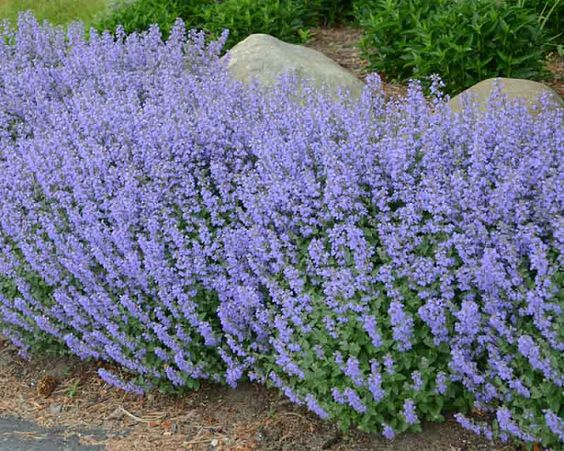
The Nepeta Faassenii is commonly known as the Faassenii Cat Mint plant. These are planting beds cultivators choose for ornamental purposes indeed. This is a hybrid variety that requires a minimal degree of maintenance indeed. You do not have the requirement to sow them independently. You do not have the need to weed out this variant from time to time. The flowers bloom in a full-fledged manner with minimum maintenance. The Height X Spread dimensions measure 60 X 45.
2. Nepeta Subsessilis
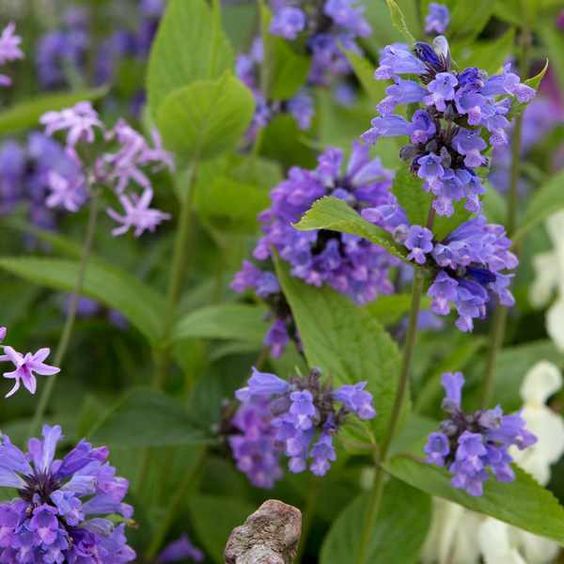
The Nepeta Subsessilis is commonly known as the Japanese Cat mint. This is a type of plant-bedding that requires moist soil as well as a partial shade to grow in. The Japanese cat mint plants have straight branched-out spikes with clusters of blue-lavender flowers. These planting beds grow as bushes and give out fragrant foliage. The Height X Spread dimensions measure 60 X 40. These planting beds require cooler climates with wetter soil to grow in.
3. Nepeta Racemosa
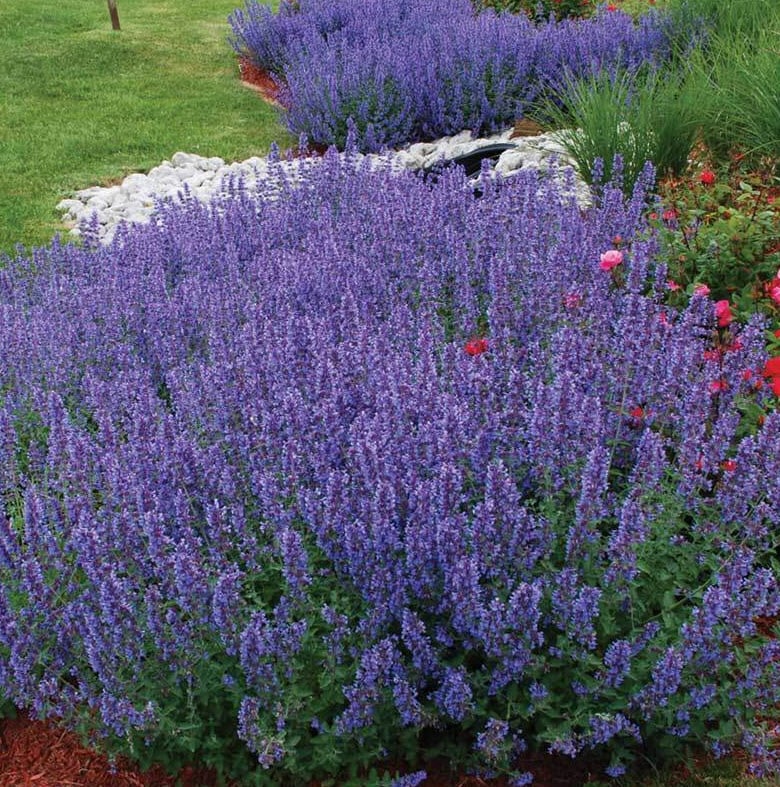
The Nepeta Racemosa is commonly known as the Persian or dwarf cat mint plant. This is a low-growing plant that grows around rounded mounds. These mounds spread as the plant bedding grows tall and wide. The plant grows at the height of 12-18 inches above ground level. Therefore, these are cat mint companion plants that can grow from the ground undercover.
4. Nepeta Cateria
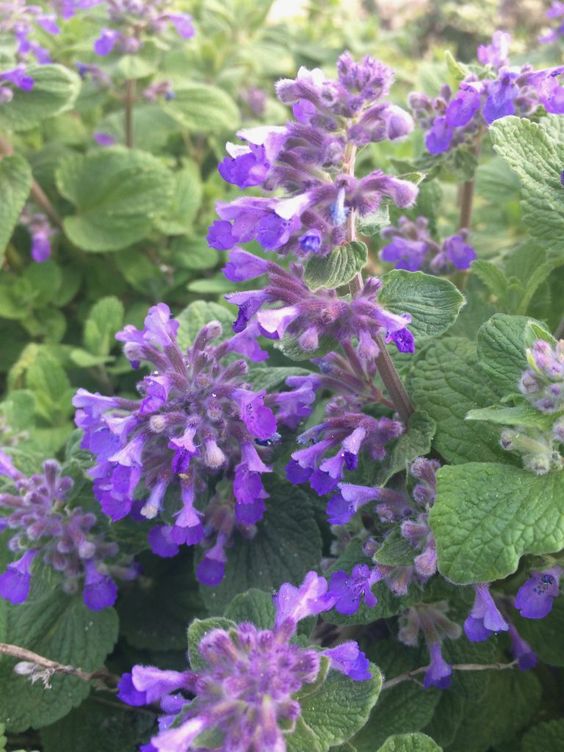
These are the most commonly cultivated genres of cat mint plants. The plants have flowering beds consisting of silvery-green leaves and violet flowers. The plants give out a special fragrance owing to their rich foliage. The height X spread dimensions for this plant are 90 cm X 60 cm.
5. Nepeta Junior Walker
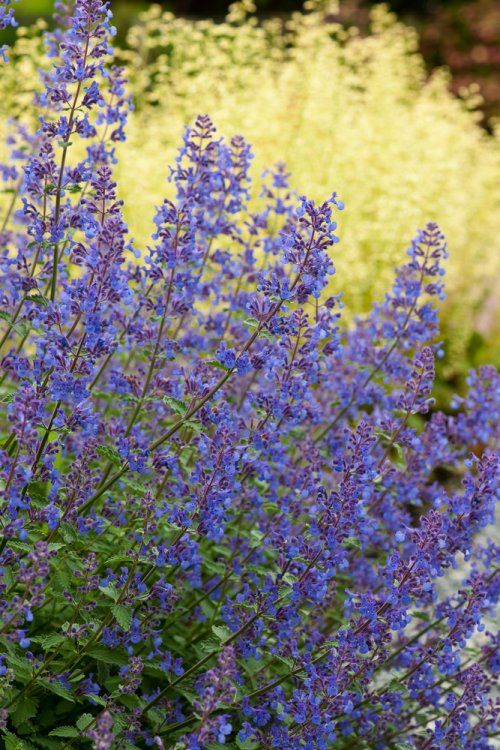
The Nepeta Junior Walker is more compact as compared to the other varieties of Cat mint plants. These planting beds grow flowers throughout the summer months. The pretty-looking lavender-blue flowers can lend a mesmerizing look to your garden spaces. These planting beds further have grey-green foliage with sturdy stems. Therefore, these perennials grow well across borders or walkways of your outdoor spaces. The Height X Spread dimensions are 40 X 40.
6. Nepeta Six Hills Giant
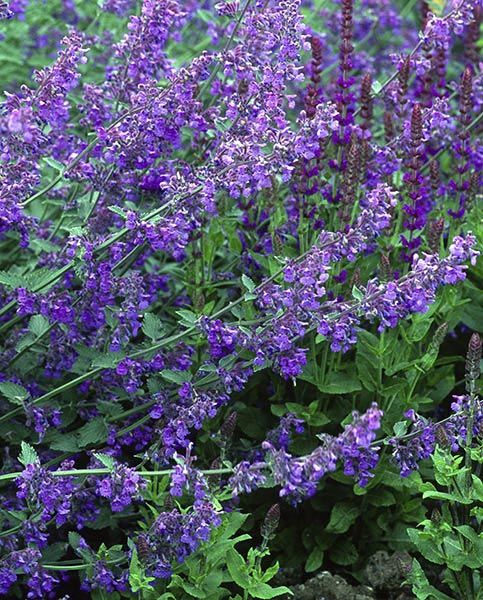
The Nepeta ‘Six Hills Giant’ is a gigantic variety of cat mint companion plants. The flowering beds spread over a substantial mound filled with blue-mauve flowers. These are planting beds that grow as clumps. The plants are cultivated by gardeners or horticulturists for ornamental purposes. They grow as tall as 60 cm high. The Height-Spread dimension for this variant measures 60 X 40.
To Sum Up
These are planting beds that are popular among gardeners as they come to you with a lower degree of maintenance. These are easy to grow without much effort. You get newer varieties of seeds that you can get from the market. As these are low-growing plants, you can plant them near raised flowering beds or under rose bushes or near the borders of your home gardens.
These are versatile planting beds that require minimal watering. These plants can also survive drought-like conditions. As these are planting beds that require sunny or partially shady zones, overwintering can kill the roots of the plants.
Hence, you can bring your cat mint companion plants indoors and continue watering them. We have seen quite a lot of interesting facts about the Cat mint plants or the Nepeta genes to which these wonderful plants belong.

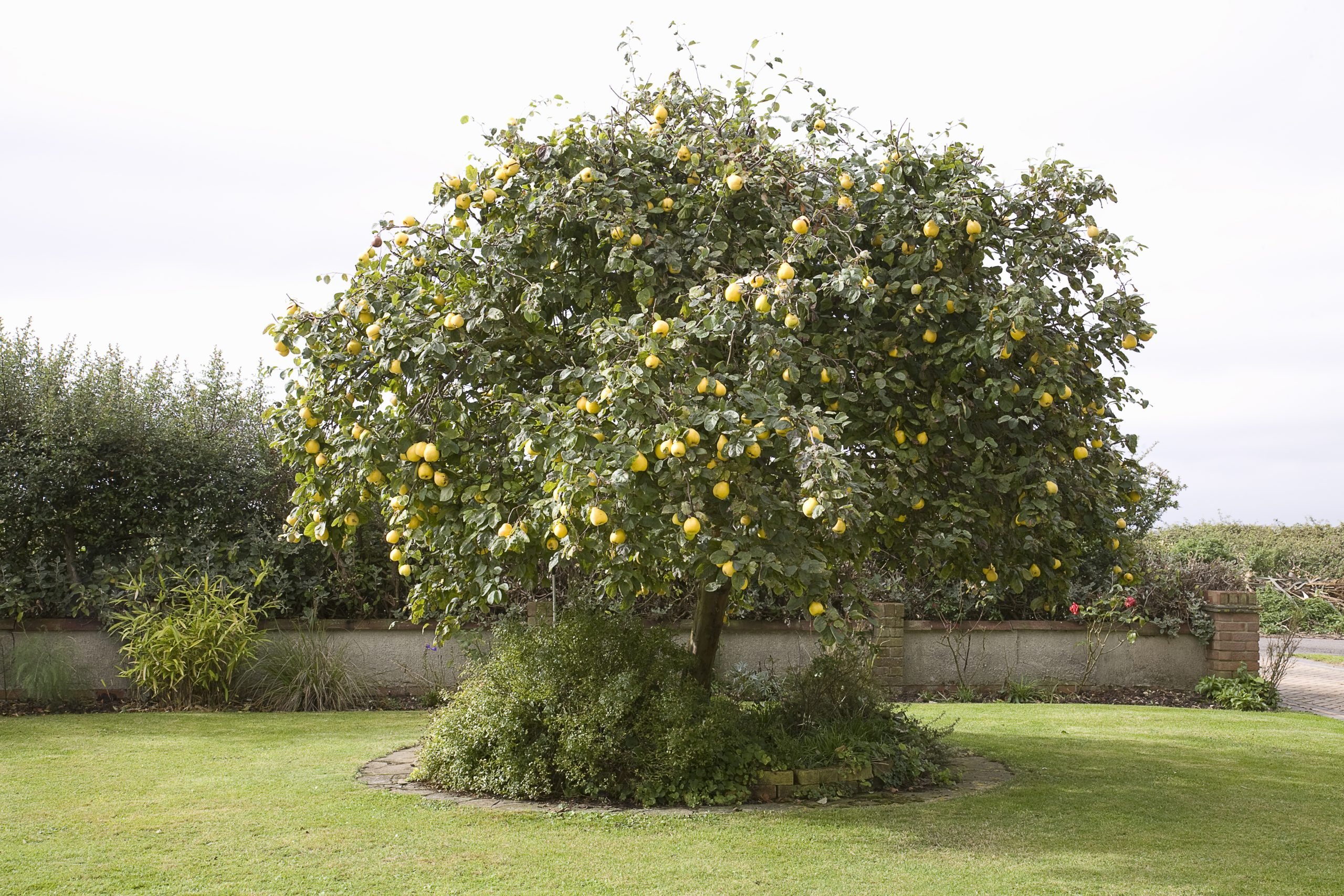
![Zinnia Planting and Caring Guide [UK]](https://staging.thearches.co.uk/wp-content/uploads/Zinnia-Plant-Care-Growing-Tips.jpg)

